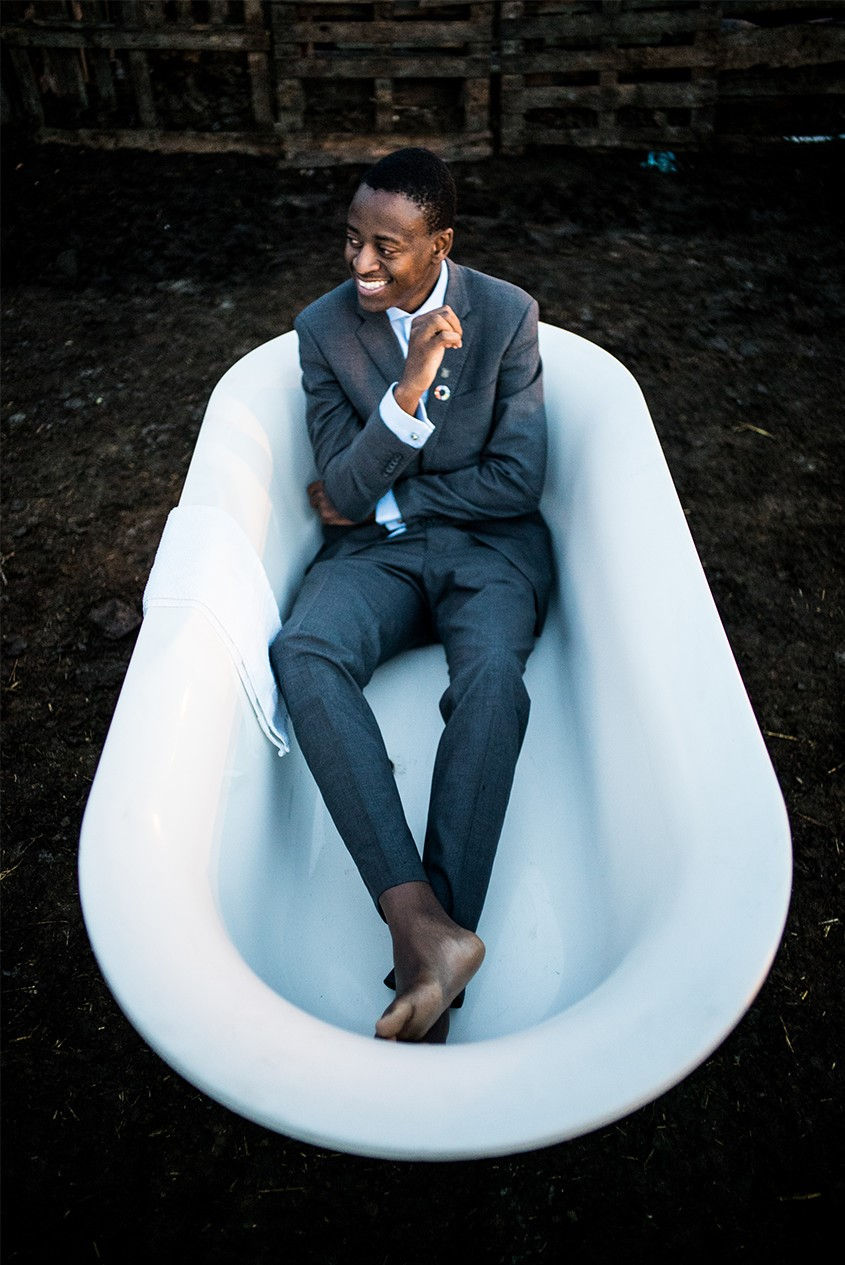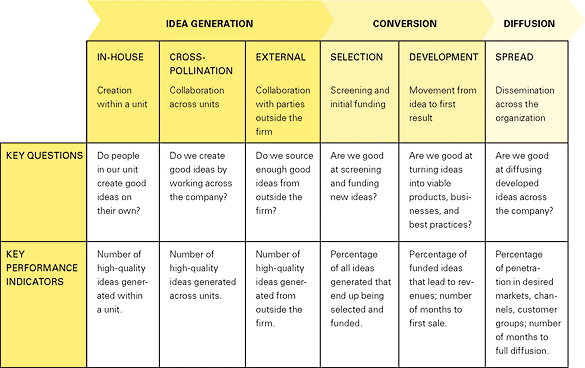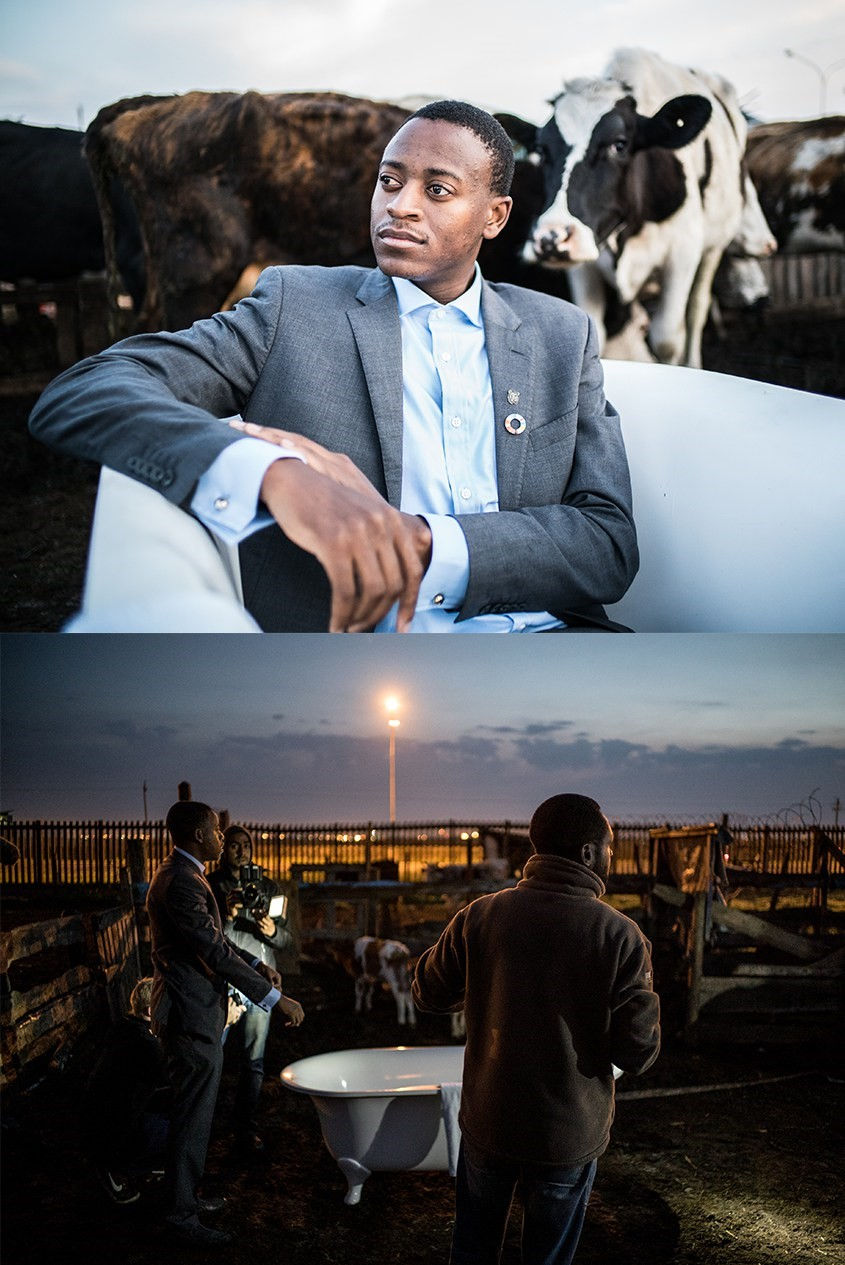And What about Innovation?
- thetiaraproject201

- Apr 25, 2016
- 10 min read
What is innovation culture?
Innovation culture is the setting in which leaders innovate in order to develop unconventional thinking processes and its prospective applications. Workplaces that adopt an innovation culture usually believe that innovation is not necessarily initiated from top leadership, but can derive from any sector within an organization. Innovation culture is usually cherished in organizations that compete in markets defined by rapid change. Maintaining the current situation that a company is in, is insufficient to compete effectively, therefore innovation culture needs to be adopted into an organization to ensure success (Rouse, 2015).


Headboy’s innovation culture
An innovative culture begins with the organizational attitude of accepting that the world really has changed. It’s about cultivating a mindset to learn to see the world in new ways (Fastcompany, 2014).Headboy industries Inc. drive innovation on a constant basis by creating a culture. This emphasizes significant cultural changes that need to be made in the company to help innovation become a more regular and natural concept (Oxfordcollegeofmarketing,2015).The innovation culture of Headboy industries stem from South Africa’s youngest patent holder Ludwick Marishane on his journey of creating an interesting product through the process of reverse innovation, a concept he hopes would inspire young South African entrepreneurs (Ventureburn,2015).With focus on the innovative patent and the use of reverse innovation ,his mission is to develop innovative products that solve the global consumer’s pressing needs, while contributing extensively to the development of Africa’s own world-leading innovation ecosystem. The process of reverse innovation begins by focusing on needs and requirements for low-cost products. Once the products are developed for these markets, they are then sold elsewhere at low prices which in turn creates new markets and uses for these innovations (Davinci,2015).The mission behind DryBath is to get off the ground and prove their capacity to innovate and give back to South Africa’s innovation scene (Venturburn,2015).The founder of headboy industries suggests the most important skill one requires is to cultivate the ability to learn very quickly, and to fail very quickly in order to learn. If you work on something you’re truly passionate about and have social support for the work you’re doing, the rest sorts itself out (Venturesafrica, 2015).


Drivers of innovation
Innovation is regarded as uncontrollable and mysterious, although this perception is beginning to change. The idea that there are factors that, singly and in combination drive innovation has just been established. An effort to understand innovation drives the factors that motivate and shape innovation efforts, and in no small way determine their success or failure. The goal is to find common innovation drivers that could be linked to successes and failures. All innovation successful or not, follows some kind of process. Some processes may be formal and repeatable, and some processes are much less formal and not as repeatable (Decision analyst,n.d).Drivers of innovation are not consistent throughout organizations, as they differ according to their objectives and goals that are required to be met in different organizational situations.
Innovation comes from diverse teams
Instead of lone geniuses and solitary Great Men, the biggest innovations often come from diverse teams. Companies need to seek out diverse perspectives & hire people with unique backgrounds and a different set of skills. Be open to the possibility of great ideas coming from anywhere on the team (Switchon, 2015).
Innovation requires collaboration
Collaboration is just as crucial as visionary ideas. No matter how brilliant an individual inventor might be, it is hard for a single person to do all the extensive work required to get great ideas out into the world and find practical implementations for them.
Innovation requires an open communication
Organizations such as Apple have done their best at innovating and have been those that have relied on strong teams, made up of diverse thinkers from different disciplines. These teams embraced independent thinking towards their innovation journey (Switchon, 2015).
Innovation requires a creative ecosystem
Innovation requires a rich, complex ecosystem of competitors and colleagues evaluating each other’s ideas and challenging each other. Working in close proximity with peers and competitors helps innovators get better at what they do. It helps them test their ideas & creates a creative cross-pollination that can spark new ideas (Switchon, 2015).
Think 10 times
True innovation happens when you try to improve something by 10 times rather than by 10%.This is the guiding inspiration for engineers at the division of Google that focuses on producing major technological advances. A 10 times goal requires you to rethink an idea entirely. It pushes an organization beyond existing models and forces them to reimagine how to approach it (Googleapps, 2016).
Stay open
Ideas don’t always come from experts. Sometimes the greatest innovations come from novice thinkers. Open-minded organizations often convert off-the-wall ideas into marketable products.
Collaborate
No organization holds all the cards in developing new innovation. Collaboration with outside groups such as complementary corporations, universities & government agencies often brings new perspectives and ideas to the innovation process (Fastcompany, 2014).

Headboy’s drivers of innovation
Nurturing Talent
Headboy industries Inc. embed creative thinking, share and bring ideas to the table, and comprise of individuals who have a natural talent within their field. Based on the way they think, feel, perform tasks and absorb information they can lead innovation in their chosen area if their talent is nurtured (Oxfordcollegeofmarketing, 2015).
Managing Creativity
The process of acknowledgement and reward is crucial to further innovation at Headboy industries Inc. When individuals and groups within the team feel their ideas are valued and recognised, they are more likely to bring future ideas to the table. Having a set process in place for encouraging and managing creativity help to keep it flowing and drive innovation (Oxfordcollegeofmarketing, 2015).
Innovators want to have an impact
Headboy industries Inc. are at the leading edge of practice and knowledge, working with the right manager, teammates, tools & resources .Impacting the world for Headboy industries Inc. means providing products or services that significantly change people’s lives, while at the same time helping the environment and making the world a more open place (Eremedia, 2016).
Lean on customers
Understanding the customer’s problems through embracing tools such as the customer empathy map to uncover new opportunities to create value. This customer insight is the foundation for Headboy industries to lean their approach to product innovation through rapid prototyping and designing partnerships with lead users to improve their product and business model (Harvard, 2015).
Think like a designer
Innovation involves creating new options and this is where designers excel. Headboy industries’ design thinking requires the tools to search for undisputed market space and make competition within the market (Harvard, 2015).
Lead the way
Innovative leaders as role models is a key driver on the journey to innovation. Ludwick Marishane’s focus is on successfully commercializing their DryBath Gel as the global standard for the waterless personal hygiene retail segment. His innovative experience is being used to develop the experimental expertise for developing innovative products & processes that solve problems for Africa & other customers (Headboy,n.d)

Does DryBath practice an established innovation process?
Ludwick Marishane was still a high school student when he thought of DryBath. The idea was inspired by a friend who was too lazy to take a bath. DryBath does in fact acquire an established innovation process. Marishane had gone about creating a creative product through the process of reverse innovation, a concept he hopes would be of importance and use to young, aspiring innovators (Coetzee, 2015). Reverse innovation is defined as “any innovation likely to be adopted first in the developing world” (Govindarajan, 2009).

What is the innovation value chain?
The innovation value chain offers a broad framework for business leaders to review their business innovation efforts in an end-to-end light. This allows innovators to notice and address their weaknesses, and in turn, tailor their innovation practices in the appropriate manner in order to solve necessary defects. This process is carried out in six distinct processes namely: internal, cross-unit, and external sourcing; idea selection and development; and spread of the idea (Hansen and Birkinshaw, 2007).

Headboy's innovation value chain
The innovation value chain for Headboy industries begins at the top of the organization and permeates through every level. It includes the culture, beliefs, expectations, and sense of purpose of those in the organization (Fastcompany, 2014).An organization is nothing more than the collective capacity of its people to create value. Sustained innovation enterprises embrace creativity, imagination, and empathy. Headboy industries build teams that act as new processes for ideas to unfold. This results in the creation of focus during ideation and analytical emphasis as market growth accelerates (Fastcompany, 2014).Members of an organization’s internal and external community often have insights and ideas that lead to new innovations (Fastcompany, 2014).


Understanding stakeholders & how Headboy’s stakeholders contribute to their innovation value chain
Stakeholders include groups or individuals that have a direct or indirect impact on the performance of the company. Stakeholders are the audiences targeted by the communication activities of the organization & are perceived to be able to influence opinions about the organization (Cook, Heerden, Plessis, 2010).
As an innovative product-development & commercialization company Headboy Industries Inc. stakeholders have varied concerns surrounding product quality and function, business sustainability, employment practices, and financial performance. These interests focus on the need for a holistic approach in which Headboy Industries uses in its aims to satisfy major stakeholder groups (Panmore,2016).Headboy Industries consider the interests and concerns of a number of key stakeholders in its policies and programmes, as stakeholder groups influence and contribute to their innovation value chain.
In the case of Headboy Industries Inc. the following stakeholders are the most significant:
Customers/ Consumers
Headboy Industries Inc. prioritize customers as its most imperative stakeholder group, composed of individual and organizational buyers of the Drybath products. The main interest of customers is to have effective and efficient products that are reasonably priced. Drybath’s premium pricing strategy is acceptable because it matches the high quality and aesthetics of these products. The company has environmental programmes responsible for sourcing the needs to address customers’ demands for business sustainability. Headboy Industries Inc. satisfy the interests of customers as their top stakeholders of the business (Panmore, 2016).
Headboy Industries Inc. Employees
This stakeholder group is composed of employees at Headboy Industries Inc. Employees as a stakeholder group are essential as they directly determine Headboy Industries Inc. Human resource capabilities to innovate and develop profitable products.
The following stakeholder members contribute significantly to the development of Headboy industries:
Dr. Hennie du Plessis
Dr. Hennie du Plessis is a chemical engineer and is responsible for everything related to DryBath’s research & development. He is considered a leader in the packing & formulation industry, and is in charge of making sure that products are produced at the highest standard & comply with all the regulations (Headboy,n.d).
Lungelo Gumede
Lungelo Gumede serves as the company's co-founding COO. His passion includes the development of innovative and sustainable solutions to emerging market problems. He has a deep interest in commercial solutions that aid in the development of youth from disadvantaged backgrounds.
Investors
Investors are interested in maximizing the return on their investments. The company effectively addresses this stakeholder group through exceptional financial performance. Headboy Industries Inc has a strong financial position & effectively satisfies the interests of investors as stakeholders (Panmore, 2016).
Suppliers and Distributors
Headboy Industries’ supply chain plays a significant role in the company. These workers are indirect stakeholders in the business, interested in ethical employment practices. The company monitors the employment practices of firms in its supply chain and satisfies the interests of this stakeholder group (Panmore, 2016).


What are barriers and enablers of innovation?
Barriers of innovation
Innovators face many obstacles, thus, there are various barriers when it comes to constructing an innovation process. These may be inadequate funding, risk avoidance, time commitments and incorrect measures.
Inadequate funding
Obtaining start-up funds for an innovation sometimes requires the organization to deduct money from another established program. Getting the money at exactly the time that it is needed may also be a problem since companies work on annual funding programmes which don’t really comply with opportunities faced in the “real world”.
Risk avoidance
No progress is made without calculated risk taking. Because people are aware of the fact that innovation is risky, they tend to run away from it. Once risk is identified, innovation comes to a halt. However, a clear-eyed view of risks balanced with an equal amount of benefits is able to create an environment where innovation is nurtured rather than killed. As the old saying goes, “there is no reward without risk”.
Time commitments
Time is a precious commodity. It is essential for investments to be paid off in a timely manner. By increasing its value, benefits as well as urgency of an innovation, will free up time to work on it.
Incorrect measures
For many organizations, market share, profits and revenues are the only measures used in the establishment of a successful innovation. However, companies need to take into realization that intangibles such as reputation, knowledge, talent and also leadership are other important assets that contribute tremendously to the value of an organization (IBM Global Business Services, 2006).
Enablers of innovation
Factors that allow the innovation process to happen efficiently and effectively are those that the organization needs in order to be successful in the creation of their innovation. These may be factors such as: customer insight, people and culture, research and development as well as operations and the business model.
Customer insight
The progress of any successful innovation requires companies to interact with their customers and design solutions to problems that need desperate attention.
People and culture
Companies must be willing to adopt habits that are willing to tailor products and services to meet the requirements of the customer.
Research and development
Companies need to ensure that they establish a careful balance between local relevance as well as global scale. One way of establishing this is to leverage global resources and apply it to the local target audience in a particular market.
Operations and business model
According to a recent survey, changes made to the structure of pricing or business model is the most extensively used approach to create and develop products and services aimed to be of use to lower-income consumers (The four capabilities of innovation, n.d).

Does DryBath have specific barriers or enablers of innovation, if so, what are they?
Growing up, Marishane wanted to be a scientist, however, his journey had a taken a turn from trying to develop his own biofuel and also creating a “healthy” cigarette made with tea leaves. After Marishane had developed these various concepts, he had discovered that there was a problem, posing as a barrier, in his process of innovation. He pointed out that innovation occurs in such a way that products are generally initiated in developed markets and then are adapted to emerging ones. Those innovations did not hold a specific place in the market. Ultimately, Marishane wanted to create democratic products that would be created from a need of a newly surfacing market, by adding value to the market which he saw as an opportunity, thus, an enabler. He had concluded that, if his newly found innovation caused 10% of the world to skip a bath once a week, then we could delay water works by as much as a year or two. The idea of Drybath was just a dream in its first years of progress. However, Marishane soon met up with a technical co-founder who then developed a prototype for DryBath. Soon after, the product attracted a lot of attention from the press and multinationals started approaching. The product was selling based on the fact that DryBath’s sole purpose was intended to save water. Marishane and his team had then began to continue with market research and concluded that about 40% of customers used the product outdoors when they went camping and 60% of the market is composed of people who are going to the office, housewives and people travelling abroad. Marishane and team had then revamped their website and refocused their target audience which increased their sales by 100% within the space of a year simply because they were able to better understand the market. The company had finally developed a type of concept whereby investing R1, R1.50 comes out of the investment. Today, Marishane is working with Pick ‘n Pay who is looking to sell DryBath for R5 a sachet within the following six months, having turned the barriers he has faced into enablers (Coetzee, 2015).


Comments